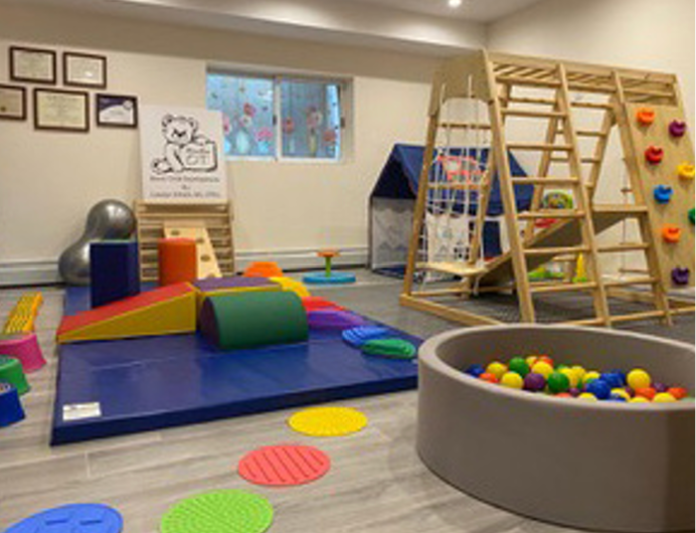Carolyn Orfahli
A grandmother may have a finger that’s “clicking” painfully every time she rolls out her yebra.
An adorable baby may not be able to sit up to enjoy the instruments at “mommy and me.”
A bride may need a custom-made brace to hold her broken wrist in place so no one can tell – “I thought it was a statement piece to match the dress.”
Occupational Therapy (OT) helps people gain independence in their activities of daily living (ADLs) or occupations. Just like our roles and expectations change as we age, OT changes across the lifespan.
Beginning in infancy, occupations include feeding, playing, etc. Infants need to progress through gross motor milestones (rolling, sitting, etc.) and fine motor milestones (pincer grasp, clapping) to advance development. Toddlers are expected to play nicely across different settings with their family and peers. Preschoolers follow along in circle time, can do basic crafts, and perform basic self-care. As school- aged children grow, their independence slowly increases as they progress in their abilities for dressing, self-care, writing, attention, etc. As a person grows into adulthood, their occupations change drastically to include maintaining a household, succeeding in a career, and taking care of children.
OT helps individuals overcome challenges they may have in completing any of their daily life skills and school/work skills. Success in these areas leads to their personal fulfillment and success.
Challenges may include minor developmental delays in infancy, sensory processing/emotional regulation difficulties, upper body/hand weakness, executive dysfunction, writing difficulties, and challenges that are a result of old age, which are treated with or without a diagnosis. Diagnoses can be developmental (born with it) or arise anytime across the lifespan or after an injury, and common diagnoses depend on the setting and age of the clients. At the end of the day, the diagnosis addresses a cluster of symptoms, which dictate expectations and precautions, and guide OT treatment plans.
Most commonly, OTs work with various developmental, orthopedic, and neurological diagnoses, which can include autism, ADHD, arthritis, fractures, carpal tunnel syndrome, cerebral palsy, stroke, traumatic brain injury, spinal cord injury, Down syndrome, and burns.
Therefore, OTs are well-known for collaborating with various medical professionals from different disciplines, such as pediatricians, orthopedic surgeons, neurologists, psychologists, teachers, paraprofessionals, speech therapists, physical therapists, and behavior therapists.
What Is the Process of OT?
OT begins with an evaluation, including an intake to record the client’s medical information and their concerns. Standardized assessments differ depending on a client’s needs/age, and on unstructured observations. Assessments are scored to determine deficits or delays. Then, OTs skillfully analyze the information/data to create client-centered functional goals to guide treatment sessions. Sessions include use of therapeutic exercises/activities, sensory processing techniques, muscle reeducation, therapeutic taping, custom-made splinting (braces for injuries or to increase functional use), and ADL training (feeding, dressing, self-care/hygiene). Each treatment session is unique and is motivating for the client, to challenge them in a safe environment. When clients meet their goals and carry their success over to their daily lives, they are discharged.
Where Do OTs Work?
Pediatric OTs work across various settings such as at an NICU (Neonatal Intensive Care Unit), in a hospital at a patient’s bedside or at hospital-based clinics, and at early intervention programs, schools, or sensory gyms. Adult OTs also work in many different settings such as hospital ICUs, inpatient rehabilitation, skilled nursing homes, outpatient clinics, home health programs, and even in prisons.
The Many Hats of an OT
OT is a versatile field. OTs work with clients of all ages and abilities. In the eyes of the clients, an OT is seen as a healer, a teacher, an advocate, and a trainer. Most OTs go by their first name because no matter what setting or age group they work with, they are always working with each client – that is, they are not just giving directions or prescriptions, they are working together with their clients.



